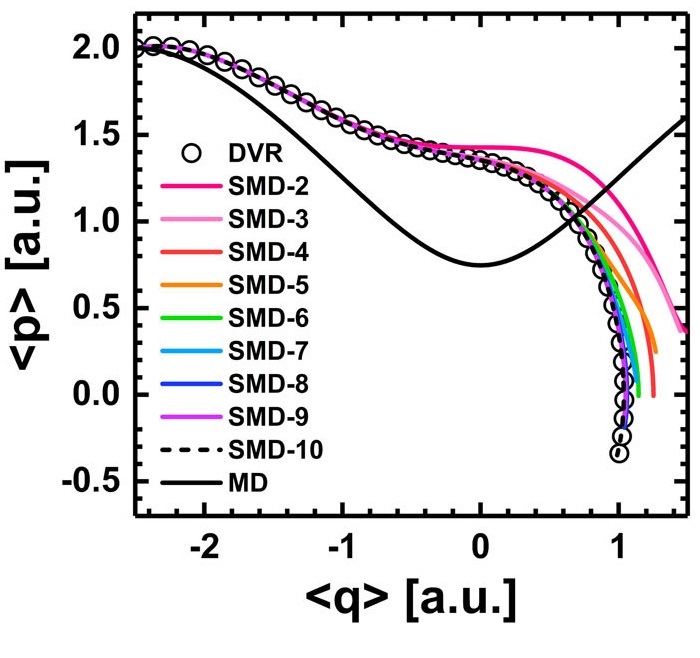My Research
Diabatization
Most molecular simulations are based on the Born-Oppenheimer approximation, where nucleus obey Newton’s laws while electrons provide nothing but a potential energy surface. However, when the electronic dynamics is essential, e.g. in photochemical process or charge transport, the Born-Oppenheimer approximation breaks. Under such circumstances, diabatization is prerequisite for the coupled electronic and nuclear dynamics

One way to globally diabatize the ab initio adiabatic wave functions is to fit the ab initio energy, energy gradients, and nonadiabatic couplings with a real-symmetric matrix (as the diabatic Hamiltonian). The independent matrix elements can in turn be expanded in arbitrary functional forms, e.g. deep neural networks
We have developed a theory and code that can diabatize even the extreme cases, e.g. conical intersections. We are extending it to photodissociation scenarios
Vibronic spectrum
An example of the coupled electronic and nuclear dynamics is the vibronic spectrum, where spectroscopy measures the transition between the coupled vibrational and electronic (vib-ronic) states

Since spectroscopy is governed by quantum mechanics, the simulation used to be limited to extremely small molecules (less than 10 atoms). We have developed a theory and code that can treat 18+ atoms. Our upper limit has not been reached yet, so we are still trying out larger and larger molecules
Semiclassical Moyal Dynamics
Nuclei is usually considered classical because of its mass. However, in the coupled electronic and nuclear dynamics, a classical description of nuclear dynamics misses out quantum mechanical electronic-nuclear couplings, e.g. quantum coherence. Other than adding an ad hoc coupling, a quantum mechanical or a semiclassical description is the only way. Since quantum mechanics is cursed by dimensionality, semiclassical mechanics is the theory for the next generation.

We have derived a semiclassical Moyal dynamics theory from phase-space formulation of quantum mechanics. We are working to improve its robustness and efficiency